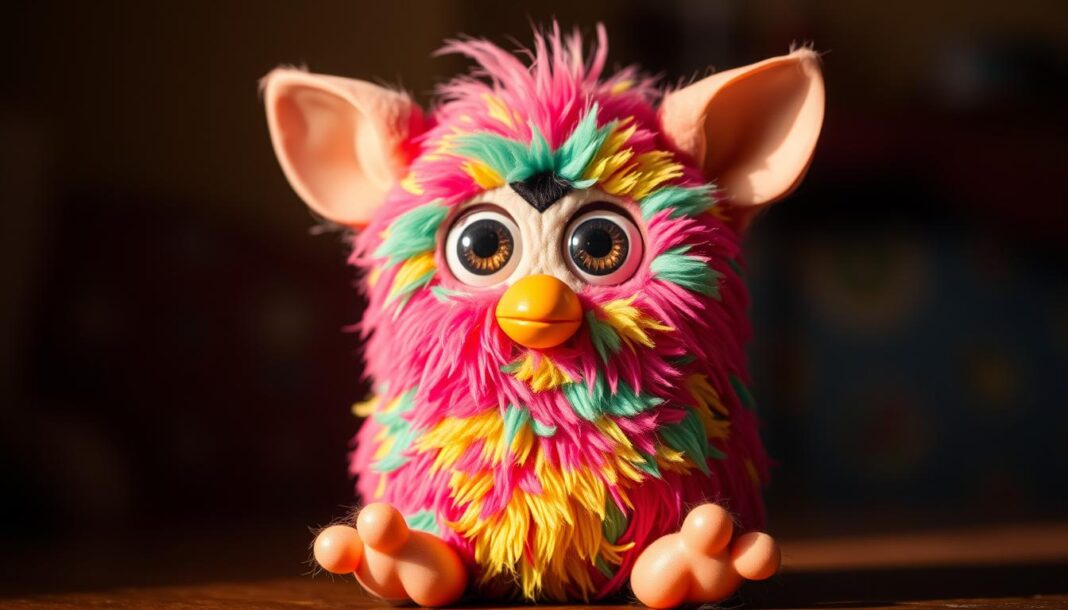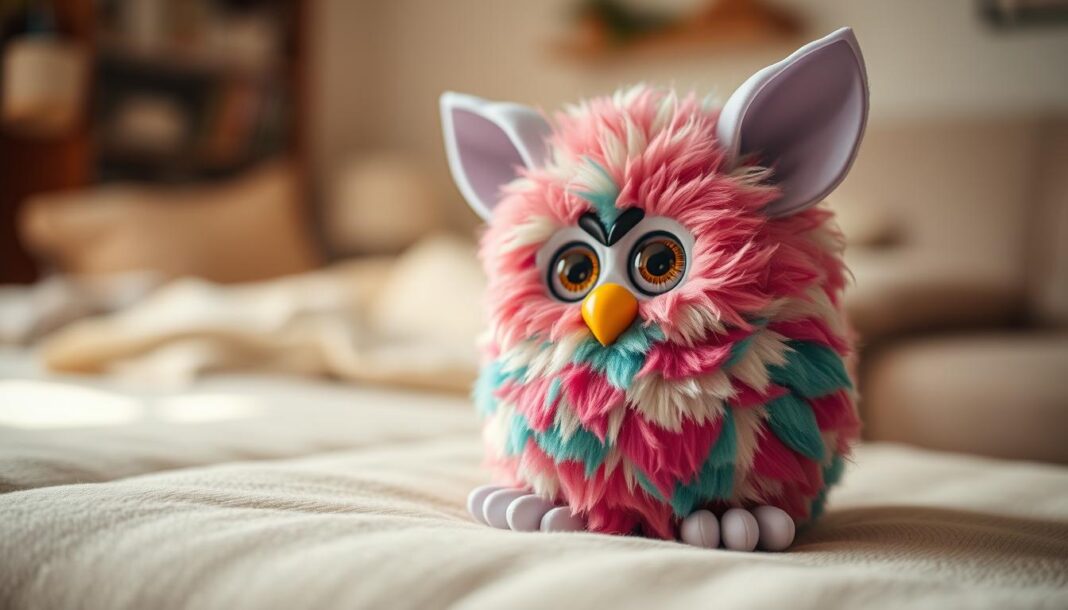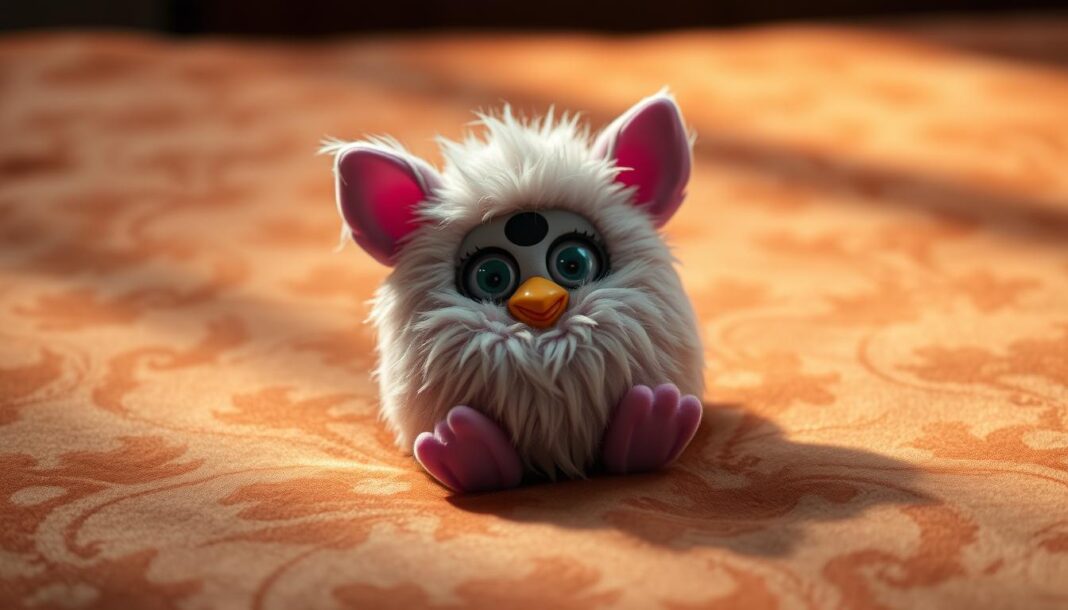The Furby, an iconic toy that has captivated children and families since its debut in 1998, remains a beloved companion for many. As we explore the world of interactive toys, it’s clear that Furby opened a window into a new era of playtime, setting the stage for modern AI-powered friends.
Over time, Furby has evolved to maintain its appeal across generations, offering a unique blend of entertainment and education. As a result, Furby has become more than just a toy – it’s a tool for learning and development.
We will delve into the world of Furby, exploring its cultural impact, educational benefits, and what parents should know before bringing one into their home.
What is a Furby? The Interactive Electronic Pet
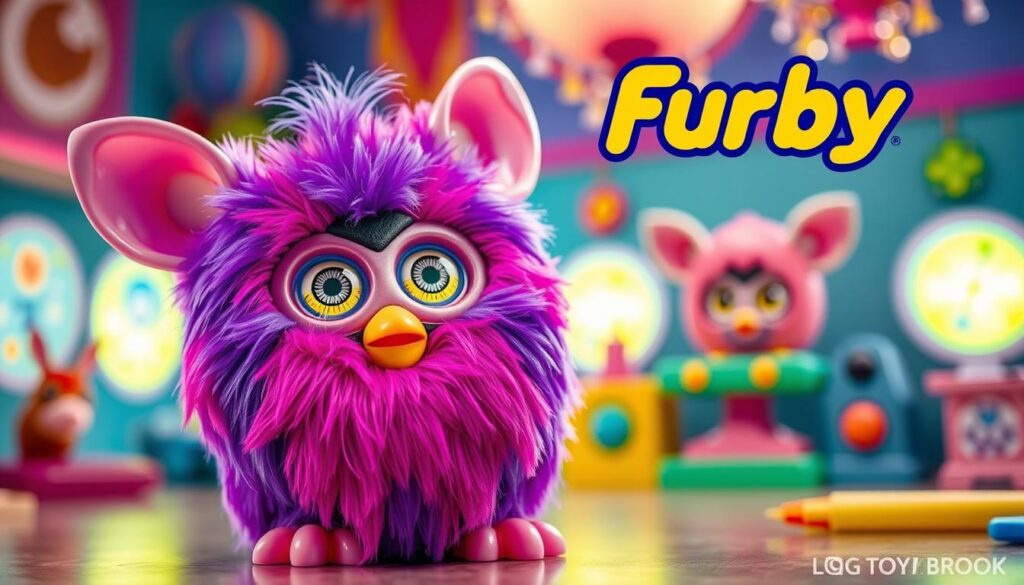
Imagine a pet that responds to your touch, motion, and sound – this is the magic of a Furby, an innovative toy that has captivated families for generations. A Furby is essentially an interactive electronic pet toy that creates a unique bond with its owner through its ability to react to various stimuli.
Origins and Concept
The Furby was invented by Dave Hampton and Caleb Chung, who spent nine months developing the first prototype before partnering with Tiger Electronics. Originally released in 1998, it quickly became a “must-have” toy during the holiday season, with its owl-like appearance and interactive capabilities fascinating children and adults alike.
How Furbies Work
Furbies are equipped with advanced technology that allows them to simulate learning and interaction. They respond to touch, motion, and sound, creating a personalized experience for their owners. The new Furby models have evolved to incorporate more sophisticated features while maintaining the core appeal of the original concept. One of the fascinating aspects of Furbies is their ability to create the illusion of learning language over time, starting with their unique Furbish phrases before gradually incorporating more English.
The Appeal to Children and Families
The universal appeal of Furbies to children lies in their ability to tap into the desire for companionship and nurturing. By creating personalized response patterns based on how they’re treated, Furbies encourage gentle interaction and a sense of responsibility. This interactive nature, combined with the evolving language capabilities, makes Furbies not just toys but companions that grow and adapt. The new Furby models continue this tradition, offering an engaging experience for a new generation. Interestingly, the original Furby was capable of speaking in 14 different languages, further enhancing its appeal globally.
As we explore what makes a Furby so endearing, it’s clear that its interactive features and ability to form a bond with its owner are key. Whether you’re considering a Furby for your family or simply curious about this iconic toy, understanding its origins, functionality, and appeal can provide valuable insights into its enduring popularity.
The Evolution of Furby Through the Years
Over the years, the Furby has evolved dramatically, reflecting changes in technology and play patterns. Since its introduction, the Furby has captivated children and families with its interactive and adaptive nature.
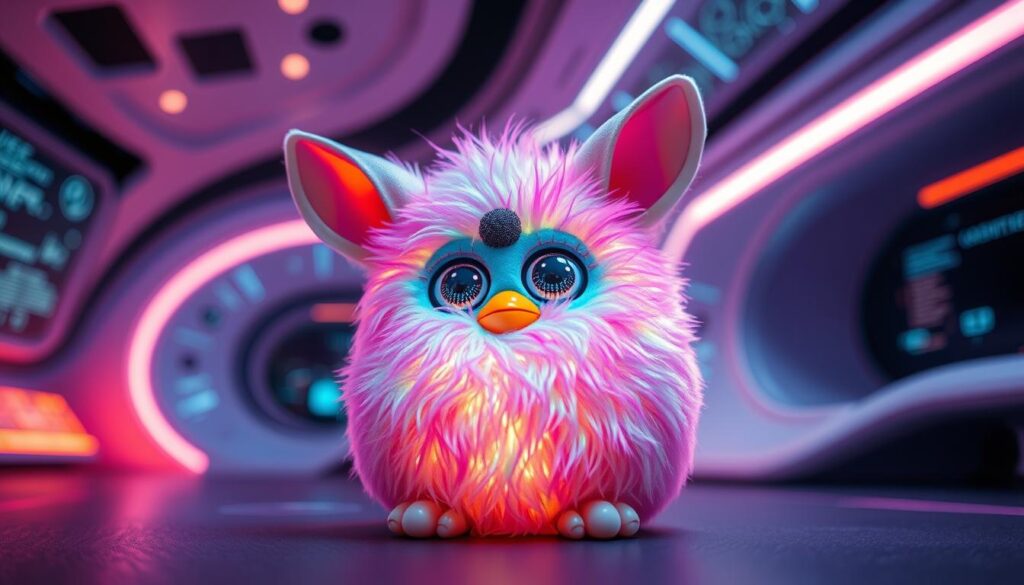
First Generation (1998-2002): The Original Phenomenon
The first generation of Furby was launched in 1998 and quickly became a sensation. These Furbies could interact with their owners, speaking in “Furbish” and gradually learning English. This initial success opened a window into the late 90s toy craze, with Furbies selling for many times their retail price.
Second Generation (2005-2007): Emoto-Tronic Furbies
In 2005, Hasbro released the Emoto-Tronic Furbies, which introduced more sophisticated emotional expressions and voice recognition capabilities. This generation marked a significant advancement in Furby technology, enhancing the interactive experience.
Third Generation (2012-2015): The Digital Age
The third generation, released in 2012, brought Furby into the digital age with black and white LCD eyes and a mobile app. This allowed for a new level of interaction and connectivity, creating a new Furby experience for a new generation.
Fourth Generation (2016-2017): Furby Connect
Furby Connect, released in 2016, featured color LCD eyes and expanded connectivity options, adding another tab to the Furby story. This generation continued the trend of integrating Furby with modern technology.
Fifth Generation (2023-Present): The Modern Furby
The latest generation, released in 2023, combines nostalgic elements with contemporary features, representing the latest step in the Furby’s evolution. This new Furby continues to captivate families while incorporating advancements in technology.
| Generation | Year Released | Key Features |
|---|---|---|
| First | 1998-2002 | Interactive, learns English |
| Second | 2005-2007 | Emoto-Tronic, voice recognition |
| Third | 2012-2015 | LCD eyes, mobile app connectivity |
| Fourth | 2016-2017 | Color LCD eyes, expanded connectivity |
| Fifth | 2023-Present | Nostalgic elements with modern features |
Each new generation of Furby has reflected the technology and play patterns of its time, maintaining the core appeal that has made Furby a beloved companion for families around the world.
Understanding Furbish: The Furby Language
As a Furby begins to “learn” English, it gradually replaces Furbish words and phrases with English equivalents, creating a unique window into language acquisition. This process not only fascinates children but also provides a valuable tool for teaching language skills and communication.
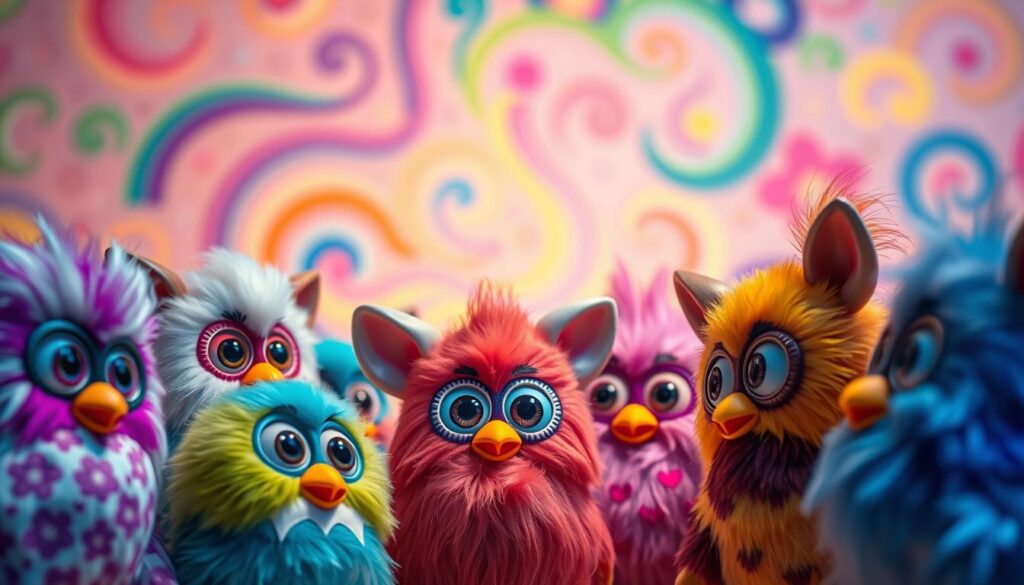
Language Development Process
When a Furby is first activated, it speaks entirely in Furbish, a language consisting of simple syllables, short words, and various sounds. Over time, the Furby gradually incorporates English into its vocabulary, simulating the process of language development. This transition from Furbish to English is designed to be engaging and educational for children.
We clarify how Furbies create the illusion of “learning” English over time. The Furby’s language development is pre-programmed to respond to various interactions, making it seem as though it’s learning from the child.
Common Furbish Phrases and Commands
Furbish includes a range of phrases and commands that children can learn to understand and respond to. Some examples of Furbish phrases include:
- wee-tah-kah-loo-loo: Tell me a joke.
- u-nye-loo-lay-doo?: Do you want to play?
- u-nye-way-loh-nee-way: Go to sleep now.
By understanding these phrases, parents and children can better interact with their Furby, enhancing the overall experience.
Teaching Through Furby’s Language Development
Furby’s language development can be a valuable teaching tool for concepts like patience, communication skills, and language acquisition. Parents can use the Furby’s gradual learning process to encourage children to communicate effectively and understand the importance of clear language.
By leveraging Furby’s interactive language capabilities, parents can create a fun and engaging learning experience that fosters a deeper understanding of language and communication.
Furby Types and Collectibles for Families
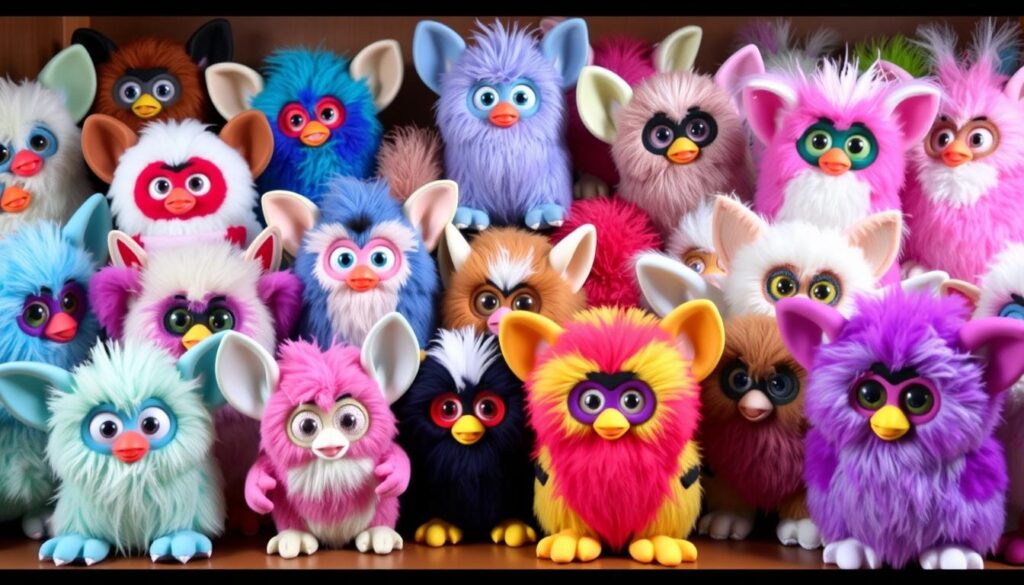
Exploring the diverse range of Furby types and collectibles can be a fun and exciting experience for families. Over the years, Furby has released numerous editions and variations, catering to different age groups and collector preferences.
Furby Babies and Furblings
Introduced in 1999, Furby Babies are a smaller, more advanced version of the original Furby. They have higher voices and cannot dance, but they switch to speaking English more quickly and have an extended vocabulary. Furby Babies come in 24 different colors, all with white eyelashes and one of six different eye colors.
Special Editions and Character Furbies
Furby has released several special edition models, including character-based Furbies like Furbacca (Chewbacca) and movie tie-ins such as interactive Furby-style “Gizmo” from Gremlins, “Interactive Yoda” based on Star Wars, and “Interactive E.T.” from the movie E.T. These special editions open a window into the collectible aspect of Furby, appealing to both children and collectors.
Furby Accessories and Companion Products
The Furby file of collectibles has expanded beyond the main toy line to include various accessories and companion products. These include carrying cases, clothing, and interactive playsets that enhance the Furby experience. Additionally, digital content and apps have been developed to extend play beyond the physical toy, providing a more immersive experience.
Interactive Apps and Digital Content
To further enrich the Furby experience, several interactive apps and digital content have been created. These allow children to engage with their Furby in new ways, such as through virtual playsets and games, effectively opening a new tab in the world of Furby interaction.
For families interested in starting a Furby collection, there are several tips to keep in mind. First, it’s essential to research the different types and editions available to understand their unique features and rarity. Second, consider the condition and packaging of the Furby, as mint condition items are generally more valuable. Finally, storing Furbies properly can help preserve their condition and value over time.
Parental Guide to Furby Ownership
As parents consider bringing a Furby into their home, it’s essential to understand the benefits and challenges that come with these interactive electronic pets. Furby can be a valuable tool for teaching children about responsibility and communication.
One of the primary concerns for parents is the appropriate age range for different Furby models. We’ve seen that various models cater to different developmental stages, ensuring that there’s a Furby suitable for every child. For instance, some Furby models are designed for younger children, focusing on basic interaction, while others are more advanced, offering complex features that appeal to older kids.
A significant misconception surrounding Furbies is their alleged ability to record conversations, which led to the infamous NSA ban in 1999. However, it’s been clarified that Furbies don’t have the capability to record or repeat classified information. Roger Shiffman, the owner of Tiger Electronics, stated that “Furby has absolutely no ability to do any recording whatsoever.” This clarification is an important file of information for privacy-conscious parents.
To maximize the Furby experience, parents can encourage communication and language development through interaction. Over time, children can learn to care for their electronic pet, understanding the importance of responsibility. Managing screen time is also crucial, especially with app-connected new Furby models, to ensure a balance between digital and physical play.
Parents can see Furby as an opportunity for bonding through shared play and discovery. By understanding how to manage Furby ownership, including troubleshooting and maintenance, parents can minimize frustrations and enhance the overall experience. With proper guidance, Furby can remain engaging and functional for a year or more, providing a valuable response to a child’s interactions.
In conclusion, Furby ownership offers a unique window of opportunity for families to engage in interactive play while learning valuable lessons. By being aware of the resources available, such as instruction manuals and online guides, parents can navigate any challenges that arise. With the right approach, Furby can be a rewarding addition to any family, providing a fun and educational experience that can be enjoyed for years to come, opening a new tab in your child’s play experience.
